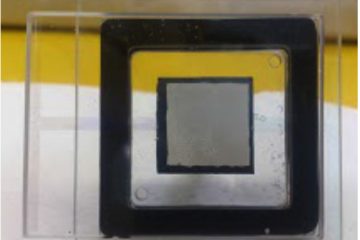Simultaneous insights into the micro dynamics and nano functionality of biological samples can be facilitated via correlative light and electron microscopy (CLEM). Scientists from Goethe University Frankfurt am Main developed novel software CLEM. It allows for the automated and efficient correlation of light- and electron-microscopic images from any two light and electron microscopes of choice with a precision of up to 25 nm.
Microalgae store chemical energy as lipids. They include a large number of high-quality, poly-unsaturated fatty acids, which are essential for human nutrition and health.
Researchers from Goethe University in Frankfurt developed a method to increase the concentration of lipids in microalgae significantly by genetical manipulation of the enzyme TAG lipase.

Galaxy clusters are the largest objects in the Universe held together by gravity but their formation is not well understood. The Spiderweb Galaxy (formally…

In the earth and environmental sciences, radioactive isotopes, atom variants that decay over time, play a major role in age determination. A radioactive…
Legionella are aerobic bacteria which appear naturally in all surface water and groundwater. From there, despite water treatment, and through raw water they can reach the drinking water systems and other water transporting installations. The invention LegiGuard is a fully automated minilab for the qualitative and quantitative determination of legionella in water pipes for e.g. drinking water. The device is able to take a defined volume of water from the water stream and to determine the existing amount of legionella. For this purpose, fluorescently labeled immunobeads are used, allowing easy detection of presence of legionella. The result is directly and electronically communicated to the user, after 1.5 – 2 hours.

Even as the 2014 Nobel Prize in Physics has enshrined light emitting diodes (LEDs) as the single most significant and disruptive energy-efficient lighting…